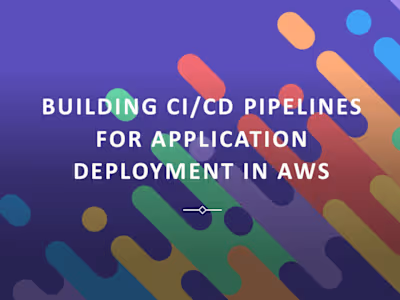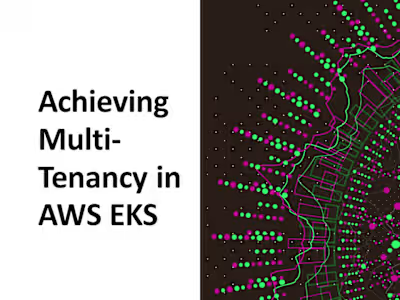Automating Resource Provisioning on AWS Cloud
Like this project
Posted Dec 25, 2023
Leveraging Infrastructure as Code principles with Terraform to streamline resource deployment process.
Likes
0
Views
16
Introduction:
In the dynamic landscape of cloud computing, the ability to provision and manage infrastructure efficiently is crucial for organizations seeking agility and scalability. One of the powerful tools that have gained widespread adoption for this purpose is Terraform, an open-source Infrastructure as Code (IaC) tool by HashiCorp. This project explores how Terraform can be used to automate the provisioning of AWS resources, with a focus on key concepts like Terraform modules, handling multiple environments, implementing Terraform layering for large infrastructures, and integrating Continuous Integration and Continuous Deployment (CICD) processes.
Terraform Modules: Building Blocks for Reusability and Modularity
Terraform modules are a fundamental concept that enables the organization and reuse of Terraform code. Modules encapsulate a set of resources with defined inputs and outputs, providing a way to create reusable components that can be shared across different projects. In the context of AWS resource provisioning, modules could represent anything from a basic set of EC2 instances to more complex configurations like VPCs with associated subnets, security groups, and IAM roles.
By leveraging modules, teams can enhance collaboration, maintainability, and consistency across their infrastructure code. Moreover, modules can be versioned and shared through Terraform's module registry, promoting a culture of code sharing and reuse.
Managing Multiple Environments with Terraform Workspaces
Handling multiple environments (such as development, staging, and production) is a common requirement in modern software development. Terraform provides a feature known as workspaces, which allows users to maintain separate state files and configurations for different environments while using the same set of Terraform files.
Each workspace maintains its state, enabling teams to apply changes independently to different environments. This ensures that modifications to development environments do not impact production, reducing the risk of configuration drift. Terraform workspaces streamline the process of managing and deploying infrastructure across various stages of the development lifecycle.
Terraform Layering for Large Infrastructures: An Organized Approach
In the context of large-scale infrastructures, maintaining a clear and organized Terraform codebase becomes essential. Terraform layering is an approach that involves structuring your Terraform code into layers based on the abstraction level and functionality. Common layers include the foundational layer (defining VPCs, subnets, etc.), service layer (defining specific services like databases or messaging systems), and environment-specific layers.
This modular approach simplifies code management, encourages code reuse, and allows teams to focus on specific components without being overwhelmed by the entire infrastructure. Additionally, Terraform workspaces can be coupled with layering to manage environments within each layer effectively.
Implementing CICD for Terraform: Ensuring Consistency and Efficiency
Integrating Terraform into a Continuous Integration and Continuous Deployment (CICD) pipeline is critical for achieving automation, consistency, and efficiency in infrastructure provisioning. Tools like Jenkins, GitLab CI, or AWS CodePipeline can be configured to trigger Terraform workflows when changes are pushed to version control systems.
The CICD pipeline typically includes stages such as plan, apply, and destroy. The plan stage involves generating an execution plan that outlines the changes to be made, while the apply stage applies those changes to the infrastructure. Incorporating automated testing, such as syntax checking and validation of Terraform configurations, further ensures the reliability of the CICD process.
Conclusion:
Automating AWS resource provisioning with Terraform offers a powerful and flexible approach to managing infrastructure as code. Terraform modules, workspaces, layering, and CICD integration contribute to creating a robust and efficient system for organizations looking to scale their applications and services in the cloud. By adopting these best practices, teams can enhance collaboration, reduce manual errors, and increase the overall agility of their infrastructure management processes.





